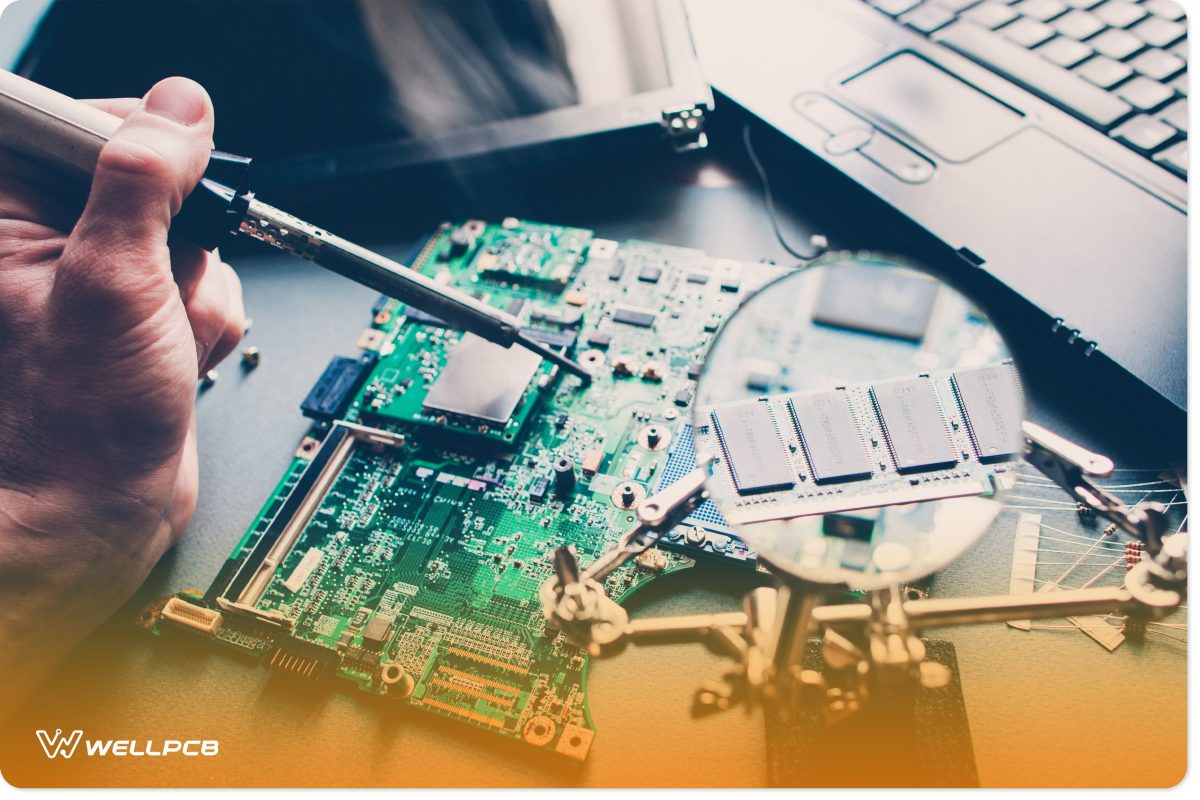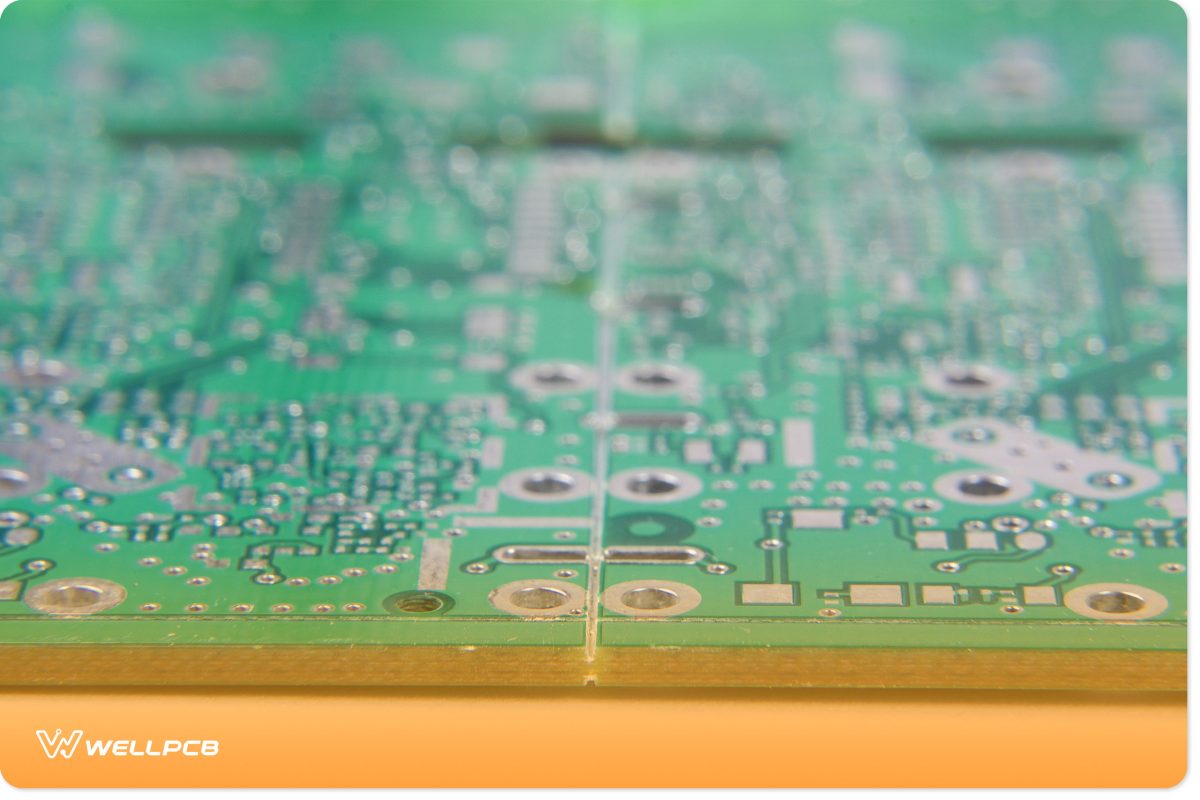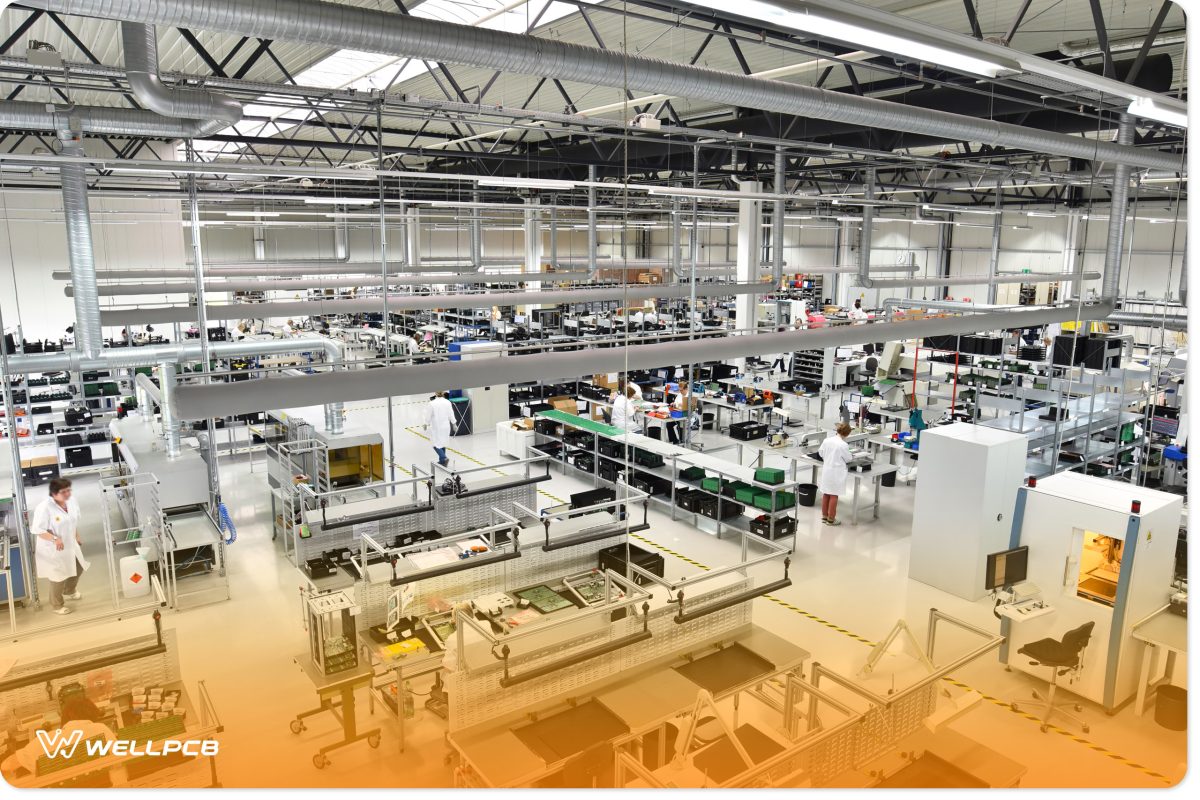Contents
- 1 Define cross-section in PCB.
- 2 Types of PCB Cross-Section Testing Analysis
- 3 PCB Cross-Section Equipment
- 4 PCB Trace Cross-Section Geometry
- 5 Cross-Section Test Coupons and Inspection Criteria
- 6 Preparing and Using Test Coupons
- 7 Challenges in the Cross-Section Preparation of Vias and PTHs
- 8 Why is PCB Cross-Sectional Analysis so Important?
- 9 Conclusion
Define cross-section in PCB.

In the introduction, we briefly explained the various methods of PCB inspection. Some may be destructive, while others are non-destructive.
It is a little like the difference between the X-Ray and biopsy/autopsy of a human body.
It will essentially help us figure out what is going wrong or what may have gone wrong.
Cross-sectioning is a destructive form of analysis where we cut out a piece of the PCB for deep material inspection. PCBs are essentially a sum of constituents and materials.
Therefore, if a singular element of the PCB fails, the entire system may fail, too. PCB Cross-section (PCB microsection) allows us to inspect the PCB’s internal quality and investigate any faults.
Types of PCB Cross-Section Testing Analysis

This section will discuss the basics of PCB cross-section/micro-section analysis. To perform a successful cross-section analysis, the PCB needs to be micro-sectioned. In other words, we must extract a piece of the PCB.
In the case of a failure, we need to identify and isolate the defect region to a section that is as narrow as possible.
We can do this using the PCB’s schematics and other tests, such as thermal imaging. Once we identify the region, we cut or section it off from the rest of the PCB.
In conclusion, this is what we refer to as the PCB core cross-section.
PCB Core Cross-Section
Once we have isolated and separated the PCB core cross-section, we mount it in potting material. This seals and protects it against the subsequent polishing process.
After we mount the PCB core cross-section, we grind it until we meet the desired plane of interest.
We perform this task with silicon carbide paper, colloidal silica, and aluminum powder.
Cross Section Heavy Copper PCB
Heavy copper and extreme copper PCBs are commonly found in the industrial sector or heavy-duty equipment operating in very harsh environments.
Heavy copper PCBs have several advantages. These include enhanced resistance to thermal strains, reduced risk of circuit failure, and increased current carrying capacity.
Multilayer PCB Cross-Section Via Connect

WeMultilayerlayer PCBs for compact applications. TMultilayeractor allows us to group many components as closely as possible, creating a PCB with a dense cross-section.
Generally and most notably, multilayer PCBs consist of a multitude of multilayer vias and holes that extend from one layer to another.
PCB cross-section analysis may be an effective way of determining how many layers a multilayer PCB comprise.
Solder Joint Crossmultilayernalysis
Solder joints may be prone to fault too. For instance, you may encounter open joints, solder skips, and hidden component damage.
And this may be due to the solder hardening prematurely during the soldering process.
Micro-sectioning through a solder joint can help us extract vital information about solder defects.
Thus, we can essentially use cross-sectioning to detect any faults from the soldering process. Furthermore, we can assess the thickness of the soldering and observe any other inter-metallic compounds.
PCB Cross-Section Equipment

If you read the previous section, you would recognize cross-section analysis requires specialized equipment, particularly in the polishing phase. This guide section covers what other equipment is necessary for the micro-section analysis.
To be clear, we use this equipment in the observational phase of the PCB cross-section analysis.
Metallograph
We use an optical microscope known as a metallograph, an essential tool in metallography.
This microscope usually contains a camera that helps you capture images of a PCB’s cross-section.
Incidentally, in some circles, cross-sectioning is also known as metallographic preparation.
Nevertheless, the metallograph is a metallurgical microscope with a zoom of up to 1000x.
We use this device to find defects when analyzing a cross-section from a PCB.
Scanning Electron Microscope (SEM)
A Scanning Electron Microscope uses a focused beam of electrons to create images of PCB cross-section surfaces. It allows you to extract information about a sample’s composition.
It works by interacting with the atoms in the PCB cross-section.
The scanning electron microscope has various detection modes and signals.
These include secondary electrons, back-scattered electrons, characteristic X-rays, light cathodoluminescence, absorbed current, and transmitted electrons.
The most significant advantage of using an SEM is that we do not need to polish the PCB cross-section before we use the SEM on it.
Thus, we can use the SEM’s back-scattered electron mode to extract the specimen’s basic and topographical information.
In addition, the SEM has a magnification ranging from 10x to 2000x.
Efficient Defect Inspection Tool
In essence, the micro/cross-section acts as a useful failure analysis tool. Boards are likely to falter due to an internal error.
Cross-sectioning may help identify these issues through deep optical inspection. Problems may result from over-etching, erroneous soldering, faulty pads, etc.
As such, it gives us a visual tool to work with, which allows us to iron out any issues with the fabrication process.
Thus, it is essential to know the extent of your PCB manufacturer’s checks and quality analysis practices, especially if you are a customer.
PCB Trace Cross-Section Geometry
As with any other geometry, PCB cross-section geometry describes the cross-section’s spatial shape and alignment.
A full cross-section geometry may illustrate the relationship between a PCB’s parts. It includes its layers, material, components, and traces.
Incidentally, trace cross-section geometry refers to the space between and alignment of the trace. They may diagram the route and differential impedance of traces.
Coplanar, microstripline, and stripline are the most common cross-sectional geometries. Additionally, each one has its in-built variations.
Cross-Section Test Coupons and Inspection Criteria
Under IPC 6012, the customer commonly specifies the inspection criteria. This section covers the test coupons and inspection criteria.
Test Coupons
A PCB need not fail before you use cross-section analysis to test it. Test coupons allow you to perform a destructive test on the board. We do this without fully dissecting it and stopping it from functioning.
We can fabricate a PCB with additional extensions.
Next, we can extract these extensions from the board without causing it to malfunction.
We call the cut-off extensions PCB test coupons. They will consist of the same material as the original PCB. Furthermore, they will have the same composition and specs.
That includes trace width, copper, and via patterns.
At least one inch out, we place the trace coupon extensions at every end of the PCB. Once we extract them, we put them in a polymer enveloping them.
After the enclosure, the sample will resemble a hockey puck. Because of its appearance, we refer to it as a puck when a test coupon reaches this level.
We then grind the puck down until we meet the interior region. Once we expose the plane of interest, an expert inspects it using a metallograph or SEM.
The test coupon’s design will follow the IPC 2220 standard.
As you would expect, each test is different for every coupon, and thus we must specialize. A PCB consists of many different parts and constituents.
Therefore, different types of test coupons and assessments should be available. These help us specify and analyze which part of the PCB has a defect.
Through Hole Coupons
We can also use through-hole coupons to assess the solderability, solder mask, legend inks, etc.
You should note that you can only use a test coupon once since the entire analysis process is destructive. That means it ultimately renders samples useless.
Assessments
When we assess a cross-section, we assess the plate through holes, vias, and barrel walls. Additionally, we use the coupon to view the barrel wall quality and structure.
Furthermore, we assess the quality of the copper plating, thickness, and voids.
Preparing and Using Test Coupons

Before we can put the coupon under a microscope, we need to prepare it.
Sample preparation
First, we number or code the coupon according to its orientation on the PCB. For instance, we label left bottom coupons as LBC, right top coupons as RTC, and horizontal coupons as HC. That will assist us in separating and sorting the samples.
Once we label the coupons, we extract them from the PCB using a diamond saw. We clean them with deionized water in an ultrasonic cleaning system as soon as we separate them.
Next, we micro-etch it before the inspection and digital photography. If we find any faults in the captured images, we magnify the regions and record them.
During this process, we also measure parameters such as dielectric thickness, solder plating thickness, and copper thickness.
In terms of copper thickness, we record basic, plating, and total thickness.
Analysis Process/PCB Cross-Section Results and Outcome
We hope to divulge from the cross-section analysis process any flaws that may occur from the fabrication process. It helps us refine the fabrication process and prevent any future faults.
While other analysis methods are available to us, they may not be enough to ensure PCB integrity.
For instance, inspection through thermal testing or other non-destructive tests may not be enough to detect subtle flaws in the PCB’s makeup.
For example, we may not be able to trace and detect the breaks present in the solder joints without destructive testing, such as cross-section analysis.
Cross-section analysis can reveal the structure of solder grains, the metals in the PCB, cracks, and voids.
Challenges in the Cross-Section Preparation of Vias and PTHs
Because of their nature, preparing a via or plated through holes presents a few challenges. They need to hold their integrity as much as possible for accurate measurement.
We must ensure that the final product reflects the original structure vias after polishing.
In addition, we must be careful not to scratch the samples, and there must be no orientation errors during the potting phase.
We need expert and careful sample polishing to remove defects while ensuring no edge rounding.
Why is PCB Cross-Sectional Analysis so Important?
In summary, the entire PCB cross-sectional analysis may help you evaluate the
- The PCB’s core materials
- Build quality in multilayer boards
- Solder-mask thickness
- DemultilayerPCB’s surface finish
- Quality of connections between layers
- Integrity of pads
- The thickness of the hole-wall plating
- Via and via fill
The manufacturer may execute a micro-sectional analysis at various phases of the fabrication process. It can occur after drilling to inspect the hole quality and how it’s registered internally.
We observe the wrap and barrel thickness when we perform the cross-sectional analysis after plating.
During the final quality check, we inspect and search for any other defects, overall thickness, and plating.
Conclusion
Cross-section analysis is just one of many quality control techniques used by manufacturers. Because it is a destructive form of testing, it may allow us to find subtle defects in a PCB.
We can perform detailed inspections and analysis by cutting a PCB down into smaller samples. Nevertheless, the above passage should give you a good understanding of why and how PCB manufacturers perform cross-section analysis.
We hope that you have found it to be helpful. Thank you for reading.





